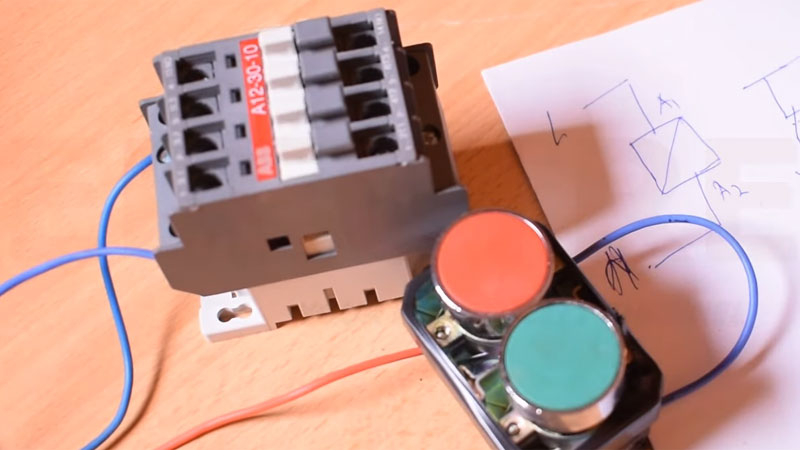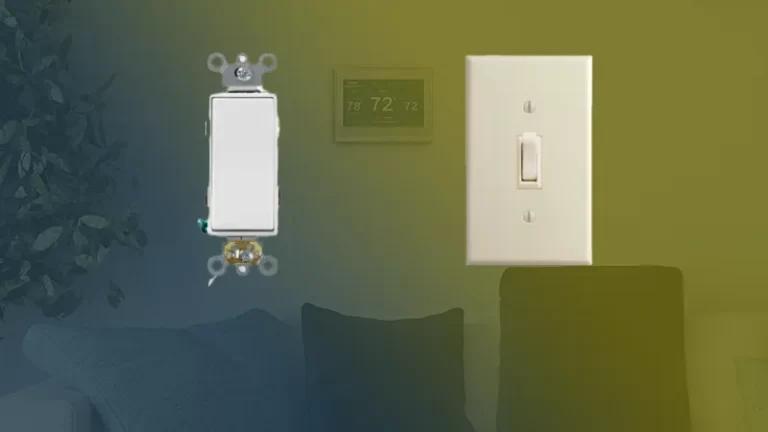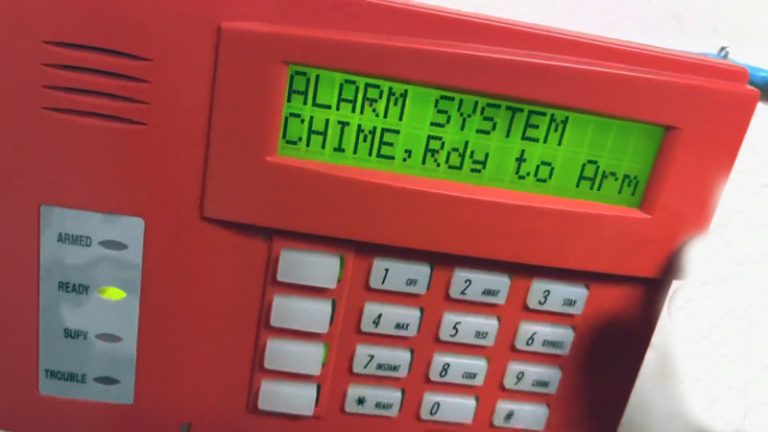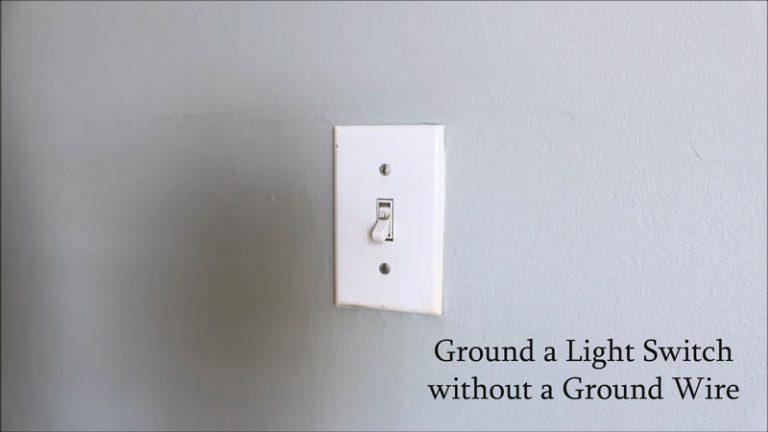Contactor Works When Pushed in [AC, Fan, Furnace Don’t Work?]

A contactor is an electrical component in an HVAC (heating, ventilation, and air conditioning) system that is responsible for starting and stopping the compressor. The compressor is a crucial part of the system that circulates refrigerant to cool and dehumidify the air in a home or building.
When the contactor is working properly, it should engage and start the compressor when the thermostat calls for cooling, and stop the compressor when the desired temperature is reached. If the contactor works when pushed in, but not when it should be activated automatically, it may be a sign of a faulty or malfunctioning contactor.
In this case, it is important to properly diagnose and repair the issue to ensure the efficient and safe operation of the HVAC system.
You'll Learn About
Why does My Ac Only Work When Contactor is Pushed in?
The likely cause of the AC only working when the contactor is pushed in is that the contactor itself is faulty and not properly engaging with the compressor.
This could be due to a problem with the contactor’s internal mechanisms, a lack of power being supplied to the contactor, or a problem with the control circuit that is supposed to activate the contactor. Low control voltage problems can also cause the AC not to cool the home, just turns on.
In order to fix the problem, it will be necessary to diagnose and repair the specific issue that is preventing the contractor from pulling in. This may involve replacing the contactor, repairing the control circuit, or addressing any power supply issues that may be preventing the contactor from functioning properly.
Fan Contactor Problem
If there is a problem with the contactor in a home ceiling fan, it may cause the fan to not turn on or to have difficulty starting. Some possible causes of a contactor problem in a ceiling fan include:
- The contactor is worn out or damaged and needs to be replaced.
- The control circuit that activates the contactor is faulty or not working properly.
- There is a problem with the power supply to the contactor, such as a blown fuse or tripped circuit breaker.
- The wiring connecting the contactor to the fan motor is loose or damaged.
To troubleshoot and fix a contactor problem in a home ceiling fan, it is best to consult the fan’s owner manual and follow the recommended troubleshooting steps. If the problem persists, it may be necessary to call in a professional electrician to diagnose and repair the issue.
Furnace Contactor Problem
If the fuse on the furnace control board is not blown and you have line voltage coming into the furnace and 120V coming out of the transformer, then you should check the low voltage wires going from the house to the outdoor condenser unit.
Make sure the wires are securely connected and not damaged. You can also check for continuity in the wires with a multimeter. If the low voltage wires are not the problem, then the issue could be with the control board in the outdoor unit or the contactor itself. You may need to call a professional HVAC technician to further diagnose and repair the issue.
Symptoms Of A Faulty Contactor
There are several common symptoms that may indicate a faulty contactor in an HVAC system:
Compressor not turning on or off when it should: If the compressor is not starting or stopping when it should be based on the thermostat setting, it may be a sign that the contactor is not functioning properly.
Fan Not Starting Or Stopping When It Should
The fan in an HVAC system helps circulate the cooled or heated air throughout the home. If the fan is not starting or stopping when it should, it could be related to a problem with the contactor.
Erratic Behavior Of The HVAC System
If the HVAC system is turning on and off unexpectedly or behaving erratically, it could be a sign that the contactor is not functioning properly. This can be frustrating and costly if the system is using more energy than it should be.
If you are experiencing any of these symptoms, it is important to diagnose the issue and determine if the contactor is the cause.
Causes Of A Faulty Contactor
There are several potential causes of a faulty contactor in an HVAC system:
Wiring Issues
If the wiring connected to the contactor is damaged or not properly connected, it could cause the contactor to malfunction. This could be due to physical damage to the wires, such as chewing from pests, or improper installation.
Control Board Problems
The control board in an HVAC system sends signals to the contactor to engage and disengage. If there is a problem with the control board, it could cause the contactor to malfunction.
Physical Damage To The Contactor
The contactor itself could be damaged, either through physical abuse or due to wear and tear over time. This could prevent it from functioning properly.
Contactor Reaching The End Of Its Lifespan
Like any mechanical component, a contactor has a limited lifespan and may need to be replaced after a certain number of cycles. If the contactor is reaching the end of its lifespan, it may begin to malfunction.
If you are experiencing issues with your HVAC system and suspect the contactor may be the cause, it is important to properly diagnose the issue and determine the root cause.
Testing The Contactor
There are a few steps you can take to test the contactor in your HVAC system:
Manually Engage The Contactor
To manually engage the contactor, you will need to locate it and manually push the lever to the “closed” position. This will start the compressor and the fan. If the HVAC system functions properly when the contactor is manually engaged, it could be a sign that the contactor is not functioning properly when it should be automatically engaged.
Use A Multimeter To Test For Continuity In The Contactor
A multimeter is a device that can be used to test for continuity in electrical circuits. To test the contactor with a multimeter, you will need to set the multimeter to the “continuity” setting and touch the probes to the contactor’s terminals. If the contactor is functioning properly, the multimeter should beep or show a reading indicating continuity. If there is no continuity, it could be a sign that the contactor is faulty.
It is important to note that testing the contactor is just one step in diagnosing an issue with an HVAC system. If the contactor appears to be functioning properly, there could be other issues causing problems with the system.
How Do You Know if Your Contactor is Shorted?
Some indications that a contactor may be shorted include:
- The resistance reading between the contacts is zero or extremely low, indicating a direct connection between the contacts.
- The contactor is not functioning properly, such as not engaging or disengaging as it should.
- The contactor is overheating or emitting smoke.
- The circuit breaker, or fuse connected to the contactor or even sometimes the main breaker trips or blows frequently.
- The motor or other equipment connected to the contactor is not functioning properly or is not receiving power.
It’s important to note that these indications may also be caused by other issues, such as a problem with the control circuit or a problem with the equipment connected to the contactor. A qualified electrician should be consulted to diagnose and repair any issues with a contactor.
Repairing Or Replacing The Contactor
If you have determined that the contactor in your HVAC system is faulty, you may need to repair or replace it. Here are some steps to consider:
Determine Whether The Contactor Can Be Repaired Or Needs To Be Replaced
In some cases, a faulty contactor can be repaired by simply cleaning or tightening the connections. However, if the contactor is physically damaged or has reached the end of its lifespan, it will need to be replaced.
Follow safety precautions when working with electrical components: It is important to take safety precautions when working with electrical components, such as turning off the power to the system and wearing protective equipment.
Steps for replacing the contactor: To replace the contactor, you will need to:
- Locate the contactor and identify the wires connected to it
- Disconnect the wires from the old contactor
- Install the new contactor by connecting the wires to the appropriate terminals
- Test the system to ensure that the new contactor is functioning properly
It is recommended to hire a professional HVAC technician to replace the contactor if you are not comfortable working with electrical components.
Conclusion
In conclusion, the contactor is an important component in an HVAC system that is responsible for starting and stopping the compressor. If the contactor is not functioning properly, it can cause issues with the operation of the system, such as the compressor not turning on or off when it should.
If the contactor works when pushed in, but not when it should be automatically engaged, it may be a sign of a faulty or malfunctioning contactor. Properly diagnosing and repairing the issue is important to ensure the efficient and safe operation of the HVAC system.
It is recommended to hire a professional HVAC technician to diagnose and repair any issues with the contactor to ensure it is functioning properly.



